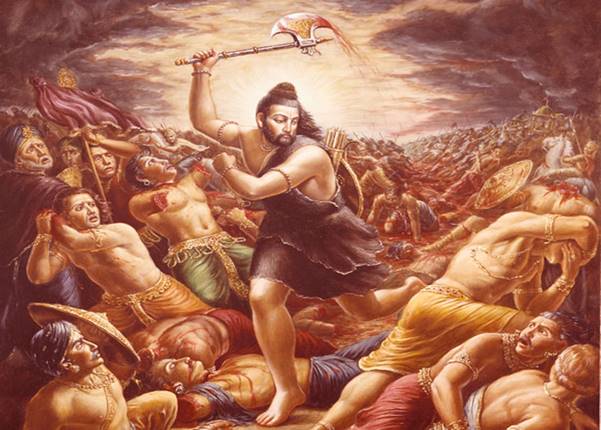How was all this possible? One factor will likely have been Conservative voters staying at home, and a few switched to other right-wing parties. But at her acceptance speech, Morgan acknowledged that it was highly likely that voters who would have preferred a Labour MP (the party saw a collapse in its vote share) or a Green MP, lent her their support in order to have the best chance of avoiding a Conservative win. This will lead some to call again for a more formal electoral pact at the country’s next General Election, whereby Labour, the Liberal Democrats and the Greens agree to stand down candidates in seats currently occupied by a Conservative, and where there is a reasonable chance of one of these three parties winning if their anti-Tory rivals stand aside.
Of course, perhaps this could be provided by each of the three parties standing candidates, but two of them making it clear that they’d rather people didn’t vote for them. Then those who want co-ordination would have clear guidance, but those who would rather vote for their traditional party still can do.
It is hard to exaggerate quite how significant a swing this was: the previous Conservative MP, Owen Paterson, whose resignation around accusations of corruption promoted the by-election, had a majority of nearly 23,000 when he was re-elected in 2019. Morgan beat the new Conservative candidate by nearly 6,000.
By Ben Davies It’s also not clear that the democratic impetus is entirely against electoral pacts. In an imperfect system such as First Past the Post, which incentivises tactical voting, voters will often face co-ordination problems in deciding whom to vote for (indeed, the North Shropshire by-election saw both the Liberal Democrats and Labour claim to be the only party who could beat the Conservatives, while British politics has a less-than-proud history of electoral leaflets making questionable claims about who is best placed to win). So, there may be some voters who genuinely appreciate a clear option of whom to vote for if they want to avoid a particular candidate.
And yet, I can’t quite agree with Saunders’ suggestion that an electoral pact is an instance of ‘compelling’ voters to select a particular candidate. I usually vote Green. If I can only vote Labour, Conservative, or for a minority party in the next election, I might well vote Labour. But nothing compels me to do so. I could choose a minority party, refuse to vote, or even run for election myself (indeed, this latter point suggests one rule of thumb around electoral pacts: they should not be last minute, but should be agreed with plenty of time).
Such a pact, if successfully executed, would at least weaken the chances of a Conservative majority at the next election. But some see this proposal as anti-democratic. For instance, writing back in April of this year, Dr Robert Saunders of Queen Mary University of London makes such an argument. He points out, quite rightly, that some voters will not agree that the priority is to reject a Conservative; some Liberal Democrats, for instance, may prefer a Conservative government to a Labour one, or think a Green candidate too left-wing to vote for. It is one thing for voters themselves to choose to vote tactically; it is quite another for their preferred parties to “compel” them to do so. And Saunders also suggests that political parties shouldn’t just rely on narrowing voters’ options to secure their vote; failure to vote for a party may be rooted in distrust or disagreement over national platforms, but it can also reflect dissatisfaction on a local candidate’s treatment of local issues. To frame an election as being entirely focused on ‘getting the Tories out’ is to ride roughshod over such concerns.
In the early hours of Friday morning last week, the long-Conservative UK constituency of North Shropshire caused some political upset (and no little political joy) by electing a Liberal Democrat, Helen Morgan.
Of course, one might think that there is a reductio ad absurdum waiting in the wings here, which is that this implies that there would be no democratic problem if each constituency only had one party standing for it. And of course, such a result would not be democratically satisfying. But this would suggest a problem not with each individual decision not to stand, but with the electoral system that had incentivised such a result.
The oddity of this suggestion, though, raises a second point about Saunders’ analysis. I’ve suggested that voters aren’t really ‘compelled’ to vote for a particular party. But nor are parties, or indeed local candidates, compelled to stand a candidate in a particular seat. Scots living south of the border might like a chance to vote for the SNP; smaller parties don’t run in every seat, even though they might find some voters in each; and of course, many voters feel that no political party really speaks to them, and would prefer to have a party that was more tailored to their views. Yet there is nothing undemocratic about any of these gaps in voter choice.
A final thought: one might avoid at least some of the sense of anti-democratic conspiracy by designing an electoral pact not as a top-down diktat to local parties from various central offices, but rather as a temporary exemption to the rules which typically rule out local parties making pacts with one another. Local parties could then vote on whether to accept an electoral pact, perhaps after polling voters who normally choose them but who aren’t full party members. In other words, there are ways to engage in an electoral pact democratically, not as an intentional restriction of choice but as a solution to a co-ordination problem. Some will still be disappointed, or angry, at not having the option they favour. But such a result is not in itself undemocratic.


